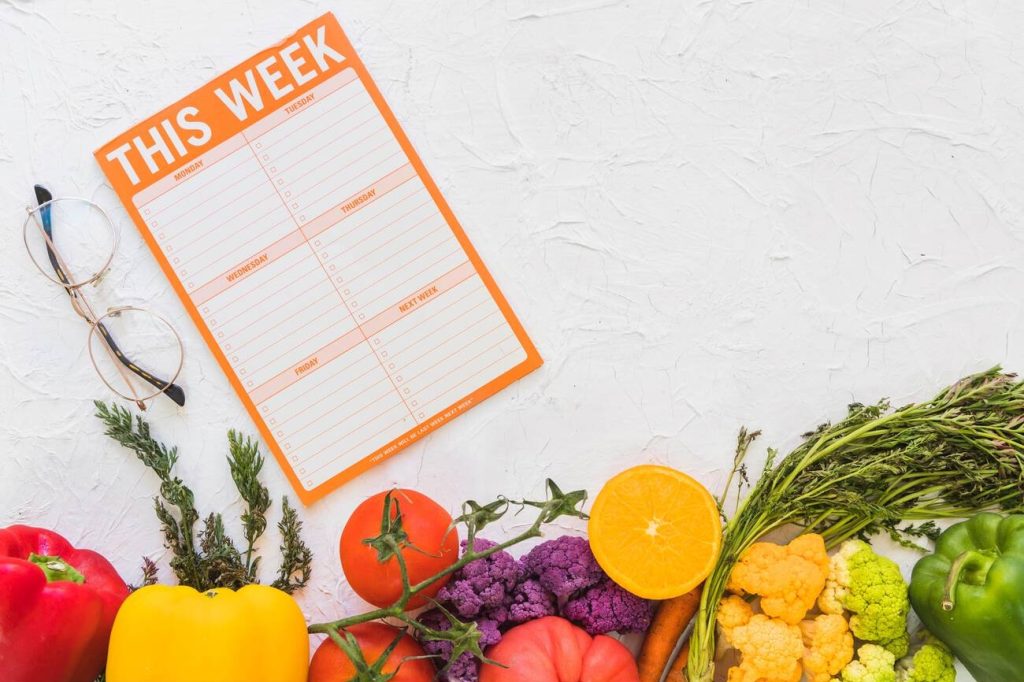When you’re meal planning for the week, it’s crucial to know how long your food can stay fresh. Nobody wants to waste money on spoiled ingredients or risk getting sick from eating expired meals. So, let’s say you cooked up a delicious batch of spaghetti and meatballs on Sunday. How long can it last in the fridge before you need to toss it out? In this article, we’ll explore the duration of food freshness, factors that affect meal prep duration, tips for longer-lasting meals, signs of spoiled food, and proper storage techniques to ensure your meals stay safe and tasty throughout the week.
The Duration of Food Freshness in the Fridge
Most food lasts safely in the fridge for about four days, but some foods can last longer depending on ingredients and storage container. To extend the shelf life of your meal preps and prevent food waste, there are a few meal prep hacks you can try to maximize freshness. First, choose high-quality storage containers that are airtight to keep your food fresh for longer periods. These containers will help seal in the flavors and nutrients while preventing any odors from spreading to other foods in the fridge. Another tip is to cool your meals before storing them and leave extra space in the containers for liquids. By following these simple steps, you can ensure that your meal preps stay fresh and delicious throughout the week, reducing food waste and saving time in the kitchen.
Extending the Shelf Life: Factors Affecting Meal Prep Duration
Factors like citric acid, temperature, ingredients, storage container, and fridge capacity impact how long prepared food can safely be stored in the fridge. Proper storage techniques are essential for preventing food waste and maximizing freshness. By understanding these factors affecting storage, you can ensure that your meal prep lasts as long as possible.
Here is a table showcasing some common meal prep options and their recommended duration in the fridge:
| Meal Prep | Duration in Fridge |
|---|---|
| Overnight Oats | 3 to 4 days |
| Pasta Dishes | 3 to 4 days |
| Green Salads | Up to 4 days |
| Rice and Grain Bowls | Up to 4 days |
| Sheet Pan Meals | Up to 4 days |
To extend the shelf life of your meal prep, consider using high-quality meal prep containers that are airtight. These containers help maintain freshness by preventing air exposure. Additionally, make sure to cool your meals before storing them in the fridge and leave extra space in the containers for any liquids.
Tips for Longer Lasting Meal Prep
To maximize the shelf life of your meal prep, it’s important to use high-quality airtight containers and cool your meals before storing them in the fridge. Proper storage techniques are essential for maximizing freshness, preserving quality, maintaining flavor and texture, and extending the shelf life of your prepped meals. When choosing containers, opt for ones that seal tightly to prevent air from entering and causing spoilage. Cooling your meals before refrigerating helps to minimize bacterial growth. Additionally, make sure to leave extra space in containers for any liquids that may be released during storage. By following these tips and utilizing proper storage techniques, you can ensure that your meal prep stays fresh and delicious throughout the week.
Identifying Signs of Spoiled Food
If you notice any changes in smell, color, texture, or the presence of mold, it’s important to throw out the food to avoid the risk of food poisoning. Identifying spoilage is crucial when meal planning for the week. Common signs of spoiled food include a foul odor, unusual colors like green or black, slimy texture, and the presence of mold. When it comes to freshness duration, food stored in the fridge generally lasts about four days while foods kept in the freezer can last three to six months. To maximize meal prep and ensure long-lasting meals, factors such as citric acid content, temperature control, ingredients used, storage container quality, and fridge capacity need to be considered. Additionally, using foods with longer shelf lives and avoiding overstuffing the fridge can help extend freshness. Following best practices for storing meal prep like checking for mold or changes in smell/color/texture and using high-quality containers will also contribute to maintaining freshness and preventing spoilage.
Proper Storage Techniques for Meal Prep
Proper storage techniques are essential for maintaining the quality and safety of your meal preps. To help you stay organized and ensure that your meals last as long as possible, consider these meal prep tips:
| Meal Prep Organization | Food Storage Containers | Meal Prepping Apps |
|---|---|---|
| Create a meal plan for the week to stay organized. | Invest in high-quality, airtight containers to keep your food fresh. | Download meal prepping apps like Anylist or Mealime to help with organization and grocery list creation. |
| Prepare ingredients ahead of time to save cooking time during the week. | Consider using different containers specifically designed for salads, batch cooking, or reheating. | Use meal prepping apps to access recipes and create customized grocery lists. |
| Divide portions into individual containers for easy grab-and-go meals. | Opt for freezer-safe containers if you plan on freezing meals for later use. | Track your nutrient intake with the help of meal prepping apps that provide nutritional information. |
In addition to proper storage techniques, increasing nutrient intake is another important aspect of meal prep. Make sure to include plenty of fruits and vegetables in your prepped meals to boost their nutritional value. By following these meal prep techniques and utilizing food storage containers effectively, you can enjoy delicious and healthy meals throughout the week while saving time and money.
Overnight Oats: How Long Can They Last
Overnight oats can last in the fridge for up to 4 days, making them a convenient and delicious breakfast option. If you’re looking for creative overnight oat recipes, there are plenty of options to choose from. You can add your favorite fruits like berries, bananas, or apples to enhance the flavor and nutritional value of your oats. To prevent mushy overnight oats, make sure to use the right ratio of liquid to oats and avoid over-soaking them. Overnight oats are also great for meal prepping on a budget because they require simple ingredients and can be made in large batches. Plus, there are countless quick and easy overnight oats variations that you can try, so you never get bored with your breakfast routine.
Pasta Dishes: Maximizing Freshness
Pasta dishes can be stored in the fridge for 3 to 4 days, and adding extra sauce or a few drops of water can help prevent dryness. To maximize freshness, try adding variety to your pasta dishes. Experiment with different sauces, proteins, and vegetables to keep your meals interesting throughout the week. By incorporating new flavors and ingredients, you can avoid sogginess and make each meal feel like a new experience. If you want to extend the shelf life of your pasta dish even further, consider freezing it. Many pasta dishes are freezer-friendly options that can be enjoyed at a later time. So go ahead, get creative with your pasta dishes, and enjoy delicious meals all week long while preventing dryness and maximizing flavor!
Green Salads: Keeping Them Crisp and Fresh
To keep your green salads crisp and fresh, separate the dressing and watery veggies until you’re ready to eat. Here are some tips for preventing sogginess and maximizing freshness:
- Choose hearty greens: Opt for greens like kale or spinach, which last longer than more delicate options like arugula or mixed greens.
- Prep green salads properly: Wash and dry your greens thoroughly before assembling the salad to remove excess moisture.
- Avoid watery veggies: Certain vegetables, such as tomatoes or cucumbers, can release water and make your salad soggy. Either add them right before serving or choose less watery alternatives.
- Dressing on the side: Keep your dressing separate until you’re ready to eat. Pour it over the salad just before serving to maintain crispness.
Rice and Grain Bowls: Maintaining Flavor and Texture
Rice and grain bowls can be stored in the fridge for up to 4 days, allowing you to enjoy flavorful and textured meals throughout the week. To maintain freshness, here are some rice and grain bowl hacks:
| Maintaining Freshness | Reheating Tips |
|---|---|
| – Store in airtight containers | – Microwave with a splash of water |
| – Keep separate from wet ingredients | – Add a drizzle of sauce or broth |
| – Cool completely before storing | – Stir occasionally while reheating |
In addition to these hacks, there are creative variations of rice and grain bowls that you can try, such as adding different protein options, vegetables, or sauces to switch up the flavors. If you want to freeze your rice and grain bowls for long term storage, make sure to use freezer-safe containers. These containers will prevent freezer burn and keep your meals tasting fresh when thawed. So go ahead and prep your rice and grain bowls for a delicious week of ready-to-eat meals!
Sheet Pan Meals: Preserving Quality and Taste
When making sheet pan meals, make sure to properly store them in airtight containers to maintain their quality and taste throughout the week. Here are some tips to help you get the most out of your sheet pan meals:
- Reheating Tips: To keep your sheet pan meals tasting fresh, reheat them in the oven or on the stovetop instead of using the microwave. This will help prevent sogginess and maintain the crispy texture of the ingredients.
- Creative Flavor Combinations: Experiment with different flavors by mixing various vegetables, proteins, and seasonings on your sheet pan. Try combinations like lemon garlic chicken with roasted asparagus or spicy tofu with bell peppers and onions.
- Time-Saving Hacks: Save time by prepping all your ingredients ahead of time and storing them separately until you’re ready to assemble and cook your sheet pan meal. This way, you can quickly throw everything together when it’s time to eat.
- Vegetarian Options: Sheet pan meals are versatile and can easily be made vegetarian-friendly by using plant-based proteins like tofu or tempeh, along with an assortment of colorful vegetables.
- Tips for Easy Cleanup: Line your sheet pan with parchment paper or aluminum foil before cooking to make cleanup a breeze. This will also help prevent sticking and ensure that your meal stays intact while transferring it from the pan to storage containers.
Conclusion
So there you have it, meal planner extraordinaire! Remember, your fridge is like a treasure chest, holding the key to delicious meals throughout the week. By understanding how long food stays fresh and using smart storage techniques, you can unlock a world of culinary possibilities. With a little creativity and some careful planning, you’ll be able to enjoy meals that are as fresh as a cool breeze on a summer’s day. So go forth and conquer that meal prep game with confidence – your taste buds will thank you!

